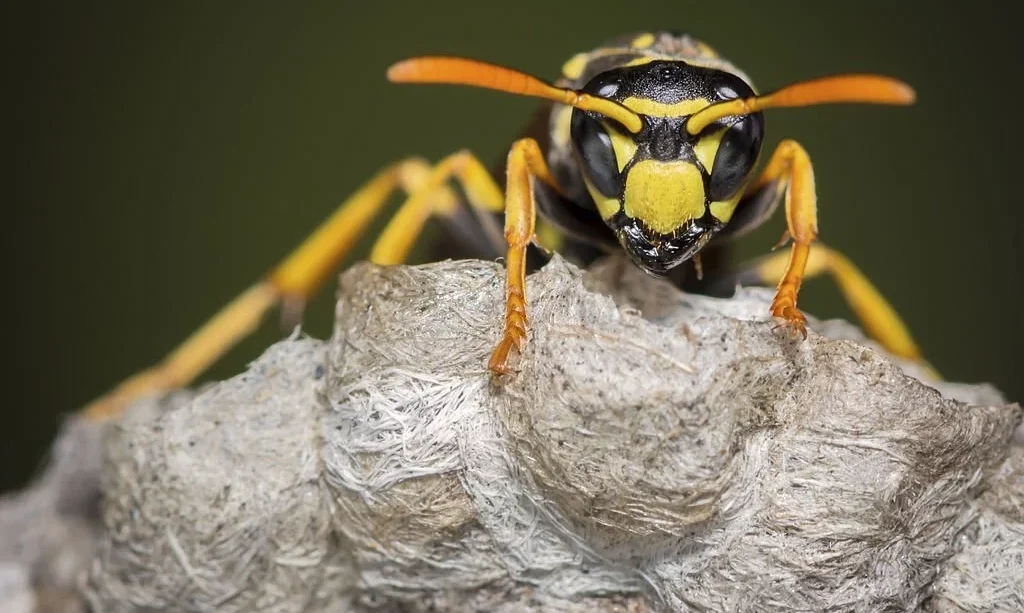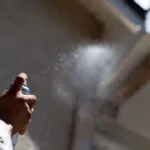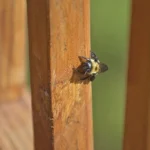Buzzing through the air with their distinctive yellow and black markings, yellow jackets are a common sight during warm months. These social wasps play an important role in the ecosystem, but have you ever wondered how long they live? In this simple guide, we’ll explore the lifespan of yellow jackets and delve into their fascinating world. Get ready to uncover the secrets of these buzzing insects!
Yellow Jackets
Yellow jackets are social wasps that live in colonies. They are known for their vibrant yellow and black coloration, which serves as a warning to potential predators. These insects are not to be confused with bees, as they have smooth bodies and lack the fuzzy appearance of their pollinator counterparts.
Yellow jackets have a hierarchical society within their colonies. Each colony typically consists of a queen, workers, and males. The queen is responsible for laying eggs and establishing and maintaining the colony, while the workers are tasked with various duties, such as foraging for food and defending the nest. The males, also known as drones, have the primary purpose of mating with the queen.
Now that we have a basic understanding of yellow jackets, let’s explore their lifespan in more detail. From the industrious workers to the mighty queen, there’s much to learn about these buzzing creatures.
Lifespan of Yellow Jackets
Yellow jackets go through different stages in their life cycle, each with its own lifespan. Let’s take a closer look at these stages:
- Queen Yellow Jackets: The queen is the central figure in a yellow jacket colony. She is responsible for starting a new colony and laying eggs. The lifespan of a queen yellow jacket can vary greatly. Some queens live for only a few months, while others can survive for several years, depending on factors such as food availability and environmental conditions.
- Worker Yellow Jackets: Worker yellow jackets are sterile females that perform various tasks within the colony. Their lifespan is typically shorter than that of the queen. On average, worker yellow jackets live for a few weeks to a few months. They tirelessly gather food, defend the nest, and take care of the developing larvae.
Now that we understand the different stages and lifespans within a yellow jacket colony, let’s focus on the queen yellow jackets and their vital role in the survival of the colony.
Queen Yellow Jackets
The queen yellow jacket is the powerhouse of the colony. She emerges from hibernation in the spring, establishes a nest, and begins laying eggs. The survival of the entire colony depends on her reproductive abilities and longevity. A queen yellow jacket can live for several months to a few years, depending on various factors such as the availability of food, protection from predators, and the overall health of the colony.
During her lifespan, the queen yellow jacket can produce a substantial number of worker yellow jackets, ensuring the growth and survival of the colony. Her role is vital in maintaining the population and continuity of yellow jackets.
Now that we’ve explored the lifespan of queen yellow jackets, let’s turn our attention to the industrious workers and their contributions within the colony.
Worker Yellow Jackets
Worker yellow jackets are the backbone of the colony. They undertake numerous tasks to support the queen and the overall functioning of the colony. Worker yellow jackets forage for food, including insects, nectar, and other sources of sustenance. They also build and expand the nest, take care of the young, and defend the colony against potential threats.
The lifespan of worker yellow jackets is relatively short, typically ranging from a few weeks to a few months. Their intense activity and hard work take a toll on their bodies, leading to a shorter lifespan compared to the queen. However, their tireless efforts contribute to the survival and success of the yellow jacket colony.
Now that we have a better understanding of the lifespans of queen and worker yellow jackets, let’s continue our exploration of these buzzing insects and their intriguing world.
Male Yellow Jackets
While the queen and worker yellow jackets are crucial to the survival of the colony, let’s not forget about the male yellow jackets, also known as drones. Their role may be different, but it’s equally important in the life of a yellow jacket colony.
Male yellow jackets exist solely for the purpose of mating with the queen. They do not have stingers and do not participate in foraging or nest building. Once they successfully mate, their journey comes to an end. Their lifespan is relatively short, typically ranging from a few weeks to a few months.
Although the male yellow jackets have a limited lifespan and contribute differently than the queens and workers, their presence in the colony is necessary for the continuation of the yellow jacket population.
Factors Affecting Yellow Jacket Lifespan
Several factors can influence the lifespan of yellow jackets. Here are some key considerations:
- Environmental Conditions: The availability of food, suitable nesting sites, and the overall climate play a significant role in yellow jacket lifespan. Adequate food resources and favorable weather conditions can contribute to longer lifespans.
- Predation and Diseases: Yellow jackets face threats from predators, such as birds, mammals, and other insects. Additionally, they are susceptible to diseases and parasites that can shorten their lifespan.
- Human Interference: Human activities, such as nest destruction or pesticide use, can negatively impact yellow jacket populations and shorten their lifespans.
It’s important to remember that yellow jackets, like all creatures, have their place in the ecosystem. They play a role in pollination, insect control, and nutrient cycling. While their presence may sometimes cause concerns, it’s essential to approach their existence with understanding and respect.
Conclusion
Yellow jackets, with their buzzing wings and vibrant colors, are fascinating creatures with unique lifespans. The queen yellow jackets lead the colony, workers tirelessly perform their tasks, and male yellow jackets fulfill their purpose in the mating process.
Factors like environmental conditions, predation, diseases, and human interference can affect the lifespan of yellow jackets. By understanding these factors and respecting their place in nature, we can coexist with these buzzing insects and appreciate their role in maintaining the balance of ecosystems.
So, next time you spot a yellow jacket buzzing around, take a moment to observe and marvel at these remarkable creatures. Remember, their lifespan may be relatively short, but their impact on the environment can be significant.




